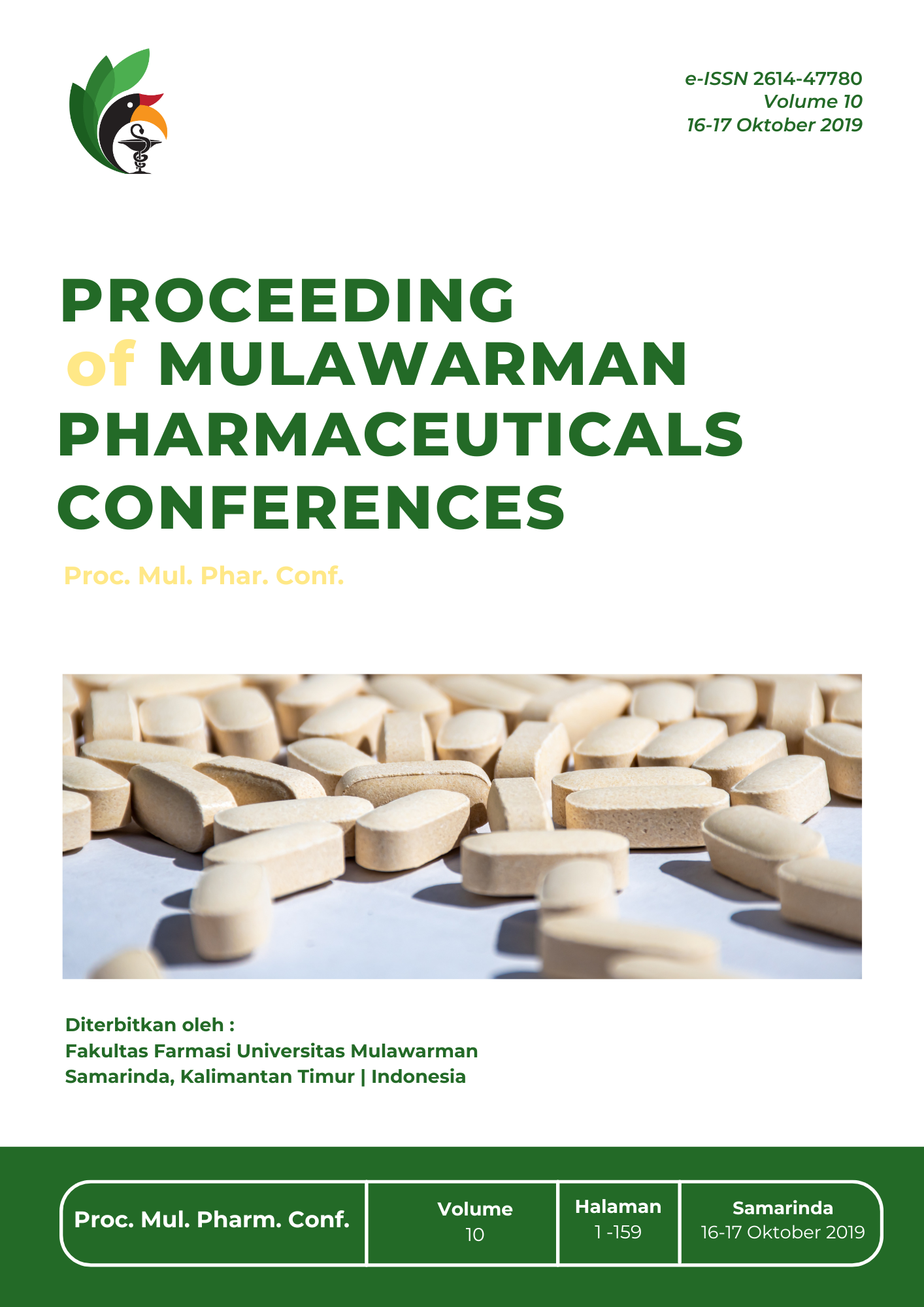Uji Aktivitas Antibakteri Kombinasi Ekstrak Etanol Daun Sirih Hijau (Piper betle L.) dan Madu terhadap Bakteri Propionibacterium acnes
DOI:
https://doi.org/10.30872/mpc.v10i.52Keywords:
Antibacterial, Piper betle L, Honey, Propionibacterium acnesAbstract
Green betel leaf (Piper betle L.) and honey have been scientifically known to have antibacterial activity. The antibacterial activity of green betel leaf is caused by the presence of compounds, such as tannins, flavonoids, saponins, alkaloids, and terpenoids. While honey is due to the high sugar content, the acidity and compounds from the flavonoid, glycoside, and hydrogen peroxide groups. This study aims to determine the antibacterial activity of the combination of these extracts against Propionibacterium acnes. Antibacterial activity was tested using the well technique agar diffusion method with green betel leaf extract concentrations of 2.5%, 5%, 7.5%, 10%, and 12.5% ??and combined each concentration with 100% of honey. The results obtained by the extract antibacterial activity at concentrations of 2.5%, 5%, 7.5%, 10%, and 12.5%, each combined with 100% of honey respectively at 11,81 mm; 14,45 mm; 15,48 mm; 16,77 mm; and 14,68 mm against Propionibacterium acnes. The results of this study indicate the combination of green betel leaf extract with a concentration of 10% and 100% honey produces the most effective inhibition zone.
References
Ajibola A, Chamunorwa JP, Erlwanger KH. 2012. Nutraceutical Values Of Natural Honey And Its Contribution To Human Health And Wealth. BioMed Central. Hal: 1–12
Damayanti RM. 2008. Khasiat dan Manfaat Daun Sirih Obat Mujarab Dari Masa Ke Masa. Jakarta: PT Argo Media Pustaka.
Davis, W. W. dan T. R. Stout.1971. Disc Plate Methods of Microbiological Antibiotic Assay. Microbiology. 22: 659-665.
Julianti E, Rajah KK, Fidrianny I. 2017. Antibacterial Activity of Ethanolic Extract of Cinnamon Bark , Honey , and Their Combination Effects against Acne-Causing Bacteria. DOI: 10.3390/scipharm85020019
Knutsen-Larson, S., A. L. Dawson, C. A. Dunnick, dan R. P. Dellavalle. (2012). Acne vulgaris: Pathogenesis, treatment, and needs assessment. Page: 99-106.
Kumari OS, Nirmala BR. 2015. Phyto Chemical Analysis Of Piper Betel Leaf Extract. World Journal of Pharmacy and Pharmaceutical Sciences (WJPPS) vol 4 (1) : 699-703.
Movita, Theresia. 2013. Acne vulgaris. Volume 40. No 3. DOI:10.1016/ j.mpmed.2017.03.003
Putra, I.M.D.S, Yustiantara, I.P.S, Paramita N.L.P.V. 2014. Ekstrak etanol daun. Perbandingan Aktivitas Atibakteri Propionibacterium Acne dari Ekstrak Etanol Daun Sirih (Piper betle L) Dataran Rendah dan Dataran Tinggi. Universitas Udayana. Bali.
Zulhawa DJ, Dewi NH. 2014. Daya Hambat Madu Sumbawa Terhadap Pertumbuhan Staphylococcus Aureus Isolat Infeksi Luka Operasi. Volume 12:40–44. DOI: 10.13057/biofar/f120105
Downloads
Published
Issue
Section
License
Copyright (c) 2019 Lucia Bilasonya Sakramentia, Nurul Fitriani, Fajar Prasetya (Author)

This work is licensed under a Creative Commons Attribution-NonCommercial 4.0 International License.


